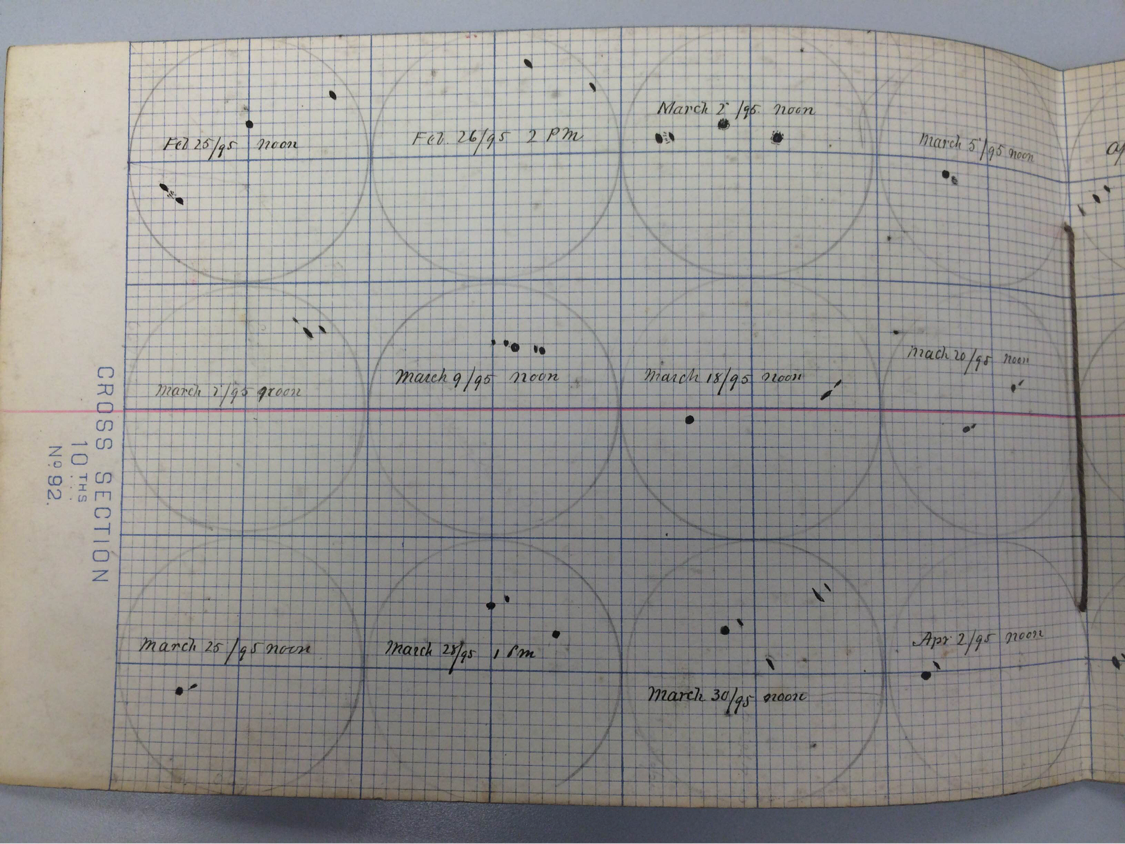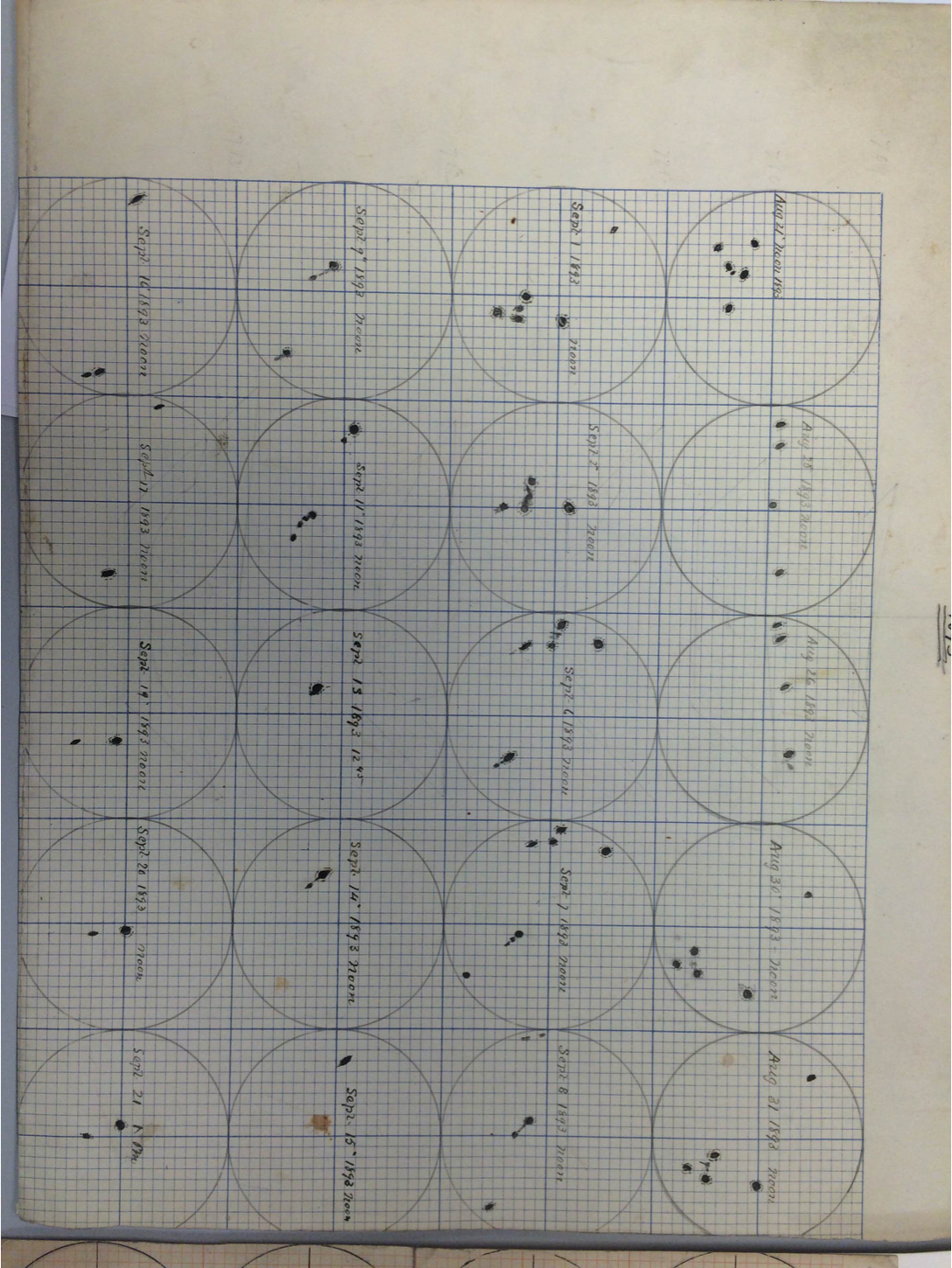This post is by KyungJun Kim
Location of the Original:
Collection Name: Observatory University of Michigan records 1855 – 1985
Call Number: 87299 Blmu Bimu C455 2
Box Number: Box 4
Folder Title: Detroit Observatory, later U-M Observatory, Ann Arbor, Mich. Sunspot Observations, 1892-1895, C.S. Woodard
Date created: 1895 February: On the sunspot graphs, there is writing “Feb25/95”. Since we know from the collection name that this box contains sunspot records between 1855 and 1985, I could confidently conclude that “95” refers to 1895.
These sunspot observation graphs are taken at the Detroit Observatory by C.S.Woodard, and during this period the director of the Detroit Observatory was Asaph Hall. Jr. Sunspots occur because these spots are cooler than surrounding areas and they appear darker because of their lower temperature. His works are important to the history of the University of Michigan’s astronomy department because sunspot cycles have important consequences on the earth’s atmosphere and I strongly believe that in past it was important to understand how sunspots could affect the earth. For example, during 1645 to 1715, called Maunder Minimum when there were not many sunspots on the Sun, Europe experienced exceptionally cold winter known as Little Ice Age. Furthermore, this artifact is related to professor Eric Bell’s research on star formation because his research focuses on how stars form, and sunspots observations can be useful in explaining some of chemical changes associated with the stellar birth. C.S. Woodard’s graphs might look like some dots on brown paper; however, these precise sunspot observations might have led to some important achievements. A famous astronomer Kepler came up with Kepler’s three laws by using precise observations recorded by Tycho Brahe, and I believe these observations by C.S. Woodard might have had the same effects on this history of astronomy.




